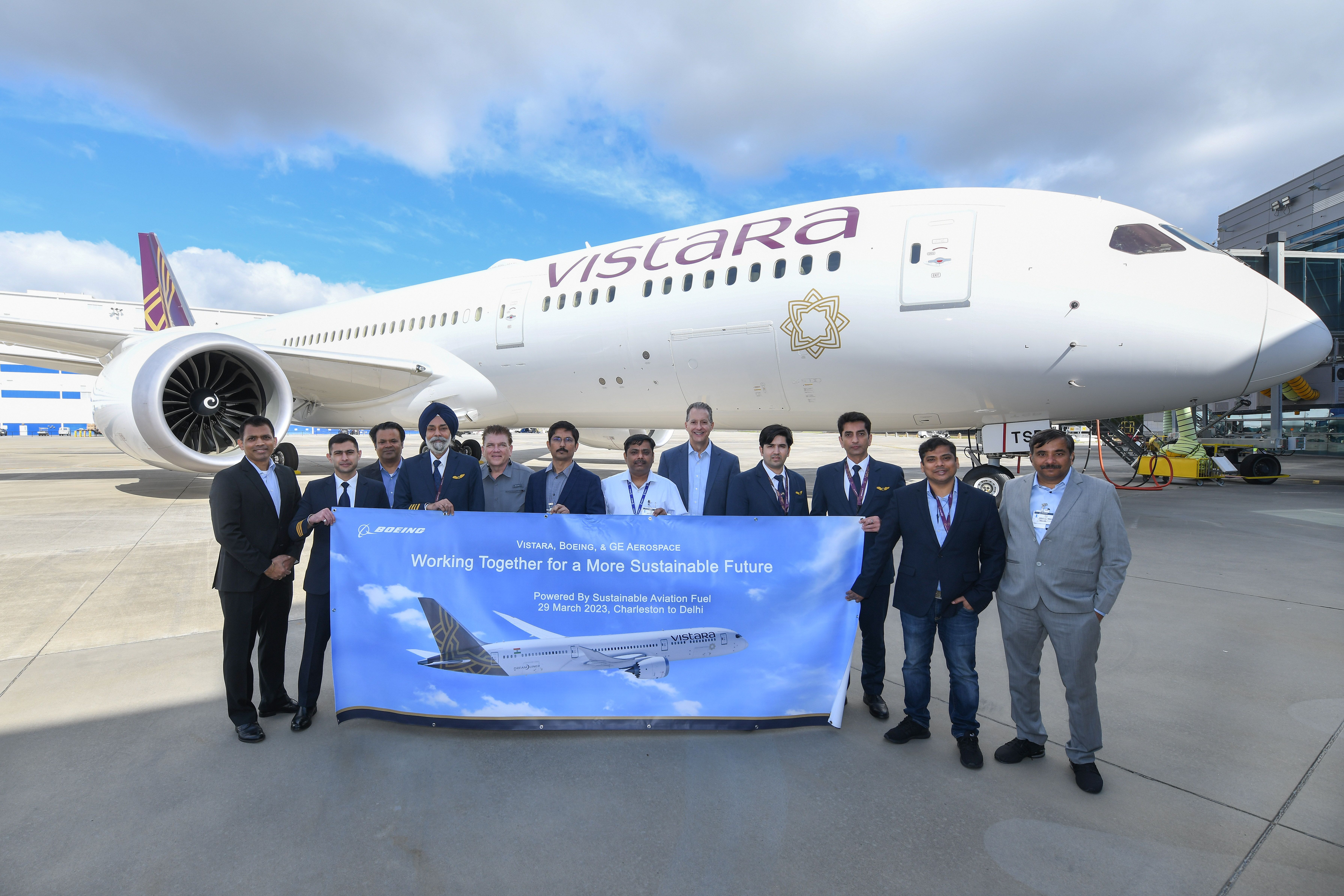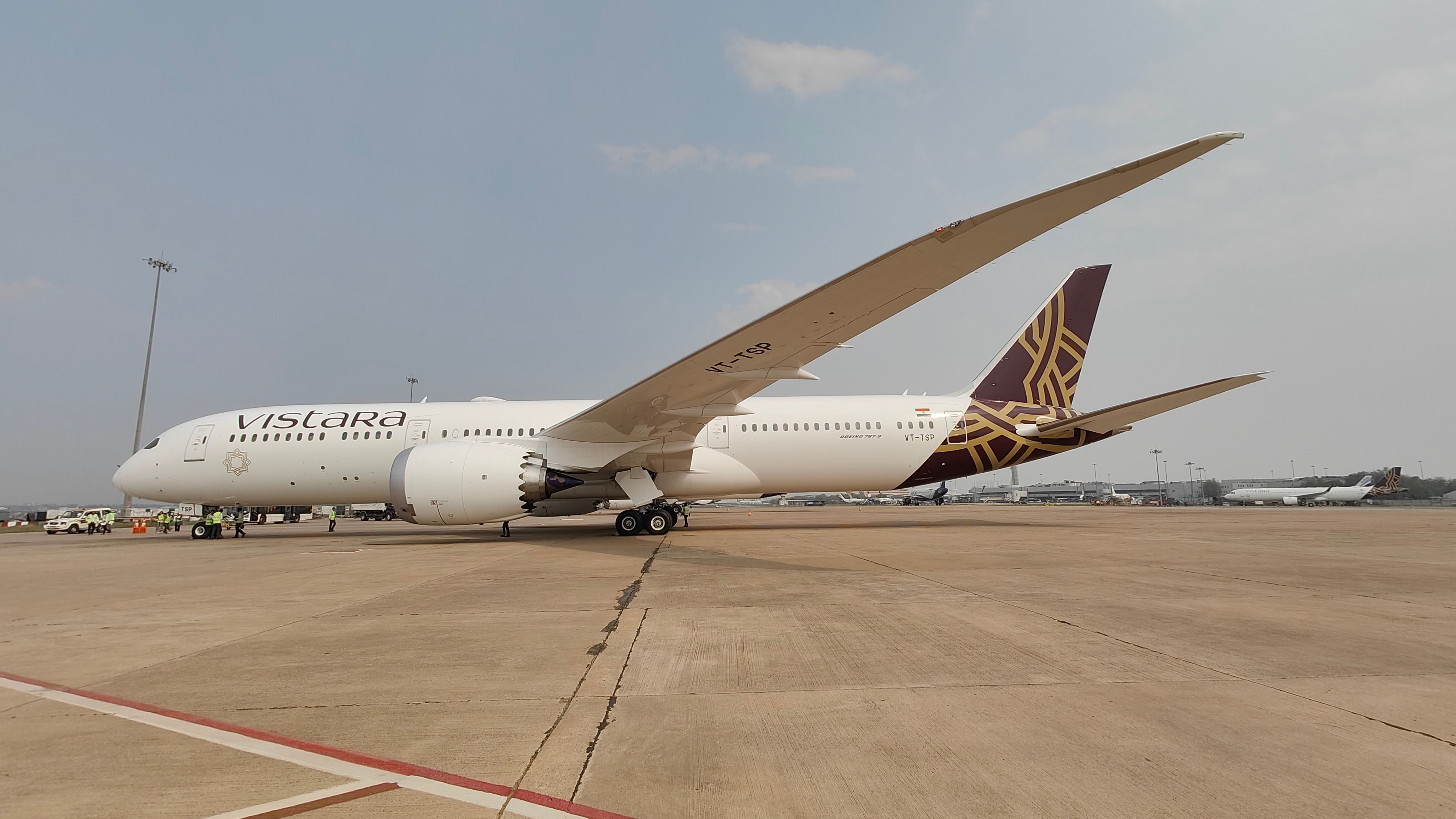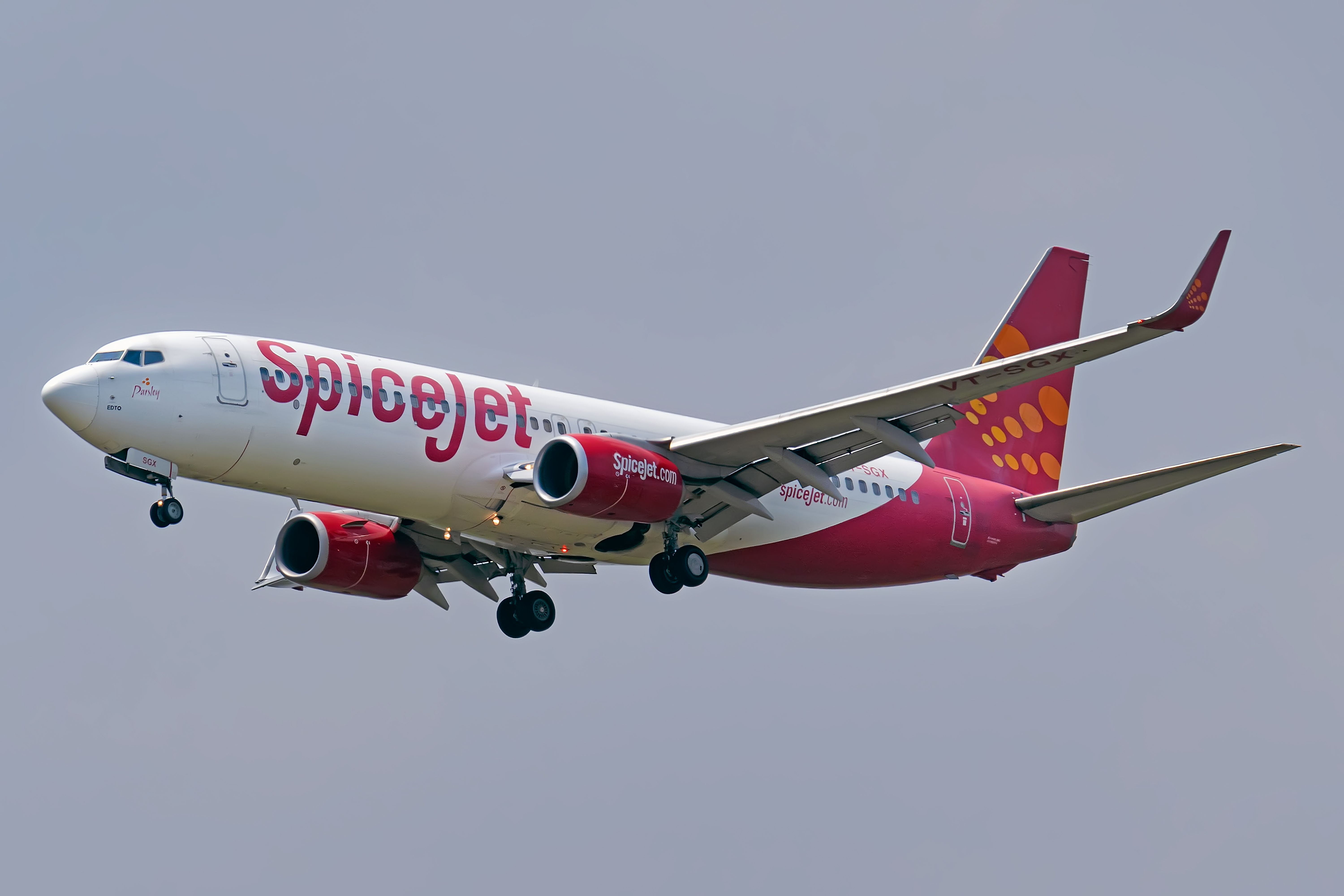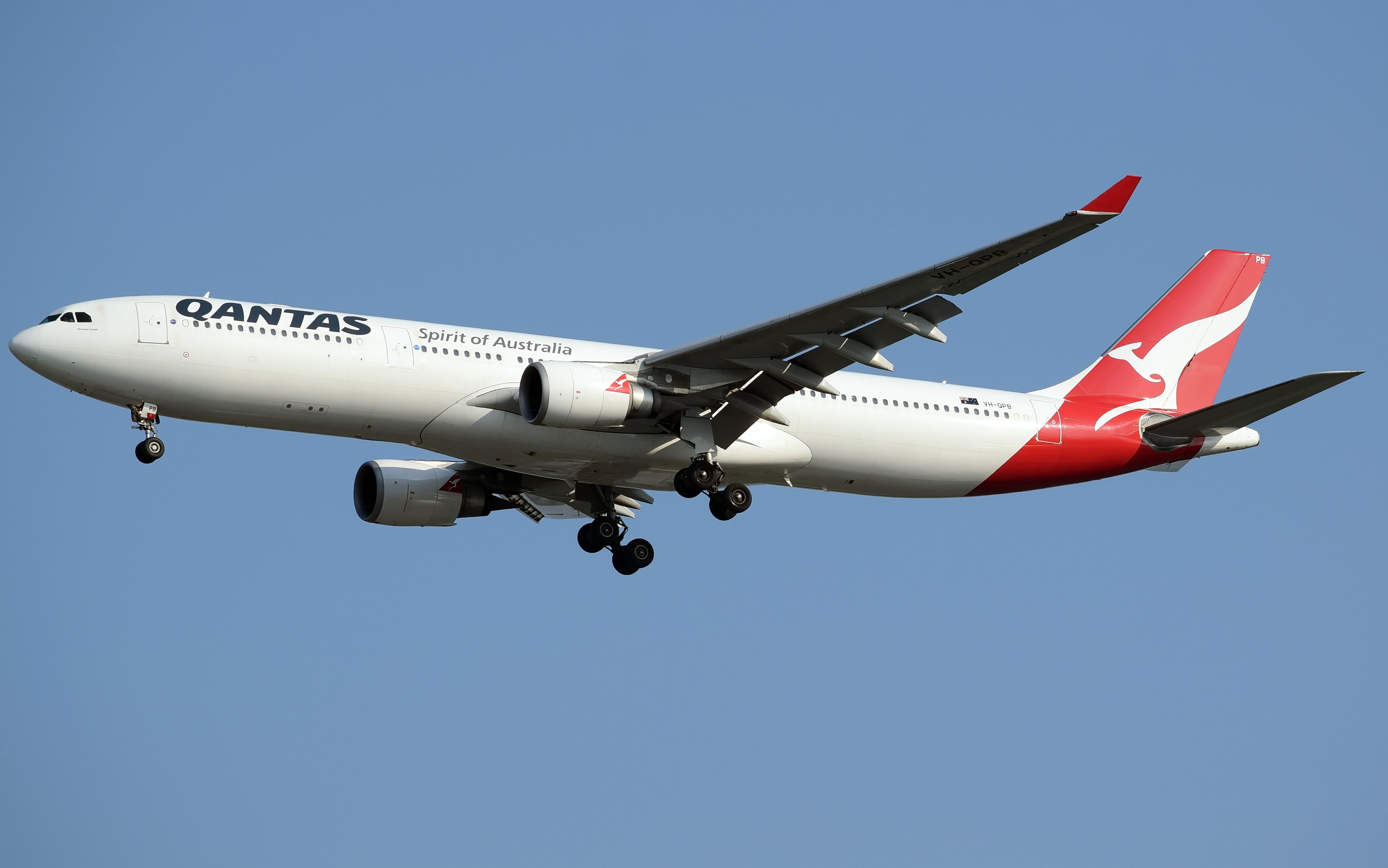Vistara's ferry flight of its fourth Boeing 787 Dreamliner was a special occasion. Apart from the addition of its newest widebody aircraft, the flight from the US to India was powered by sustainable aviation fuel (SAF). Like the rest of the world, India is looking at ways to incorporate SAF into the aviation industry, and Vistara’s latest flight is a step in that direction.
Special ferry flight
On March 30th, Vistara became the first Indian carrier to operate a widebody aircraft using sustainable aviation fuel (SAF) on a long-haul route. The occasion was the induction of its fourth Dreamliner aircraft, as the airline ferried the plane from Charleston International Airport, South Carolina to Indira Gandhi International Airport, Delhi. Vinod Kannan, Chief Executive Officer of Vistara, commented,
“We take immense pride in carrying out another pioneering initiative to operate a wide-body aircraft on a long-haul route using SAF, as we took delivery of our all-new Boeing 787-9 Dreamliner. This is an important milestone in our commitment towards achieving carbon neutrality.”
Boeing India President Salil Gupte also congratulated Vistara for the flight and said the plane manufacturer remains committed to working with Vistara and other partners to promote the use of SAF in the Indian aviation industry and around the world. Along with Boeing, the flight was operated in partnership with GE Aerospace, which provided the plane’s newest GEnx engines.
Get the latest aviation news straight to your inbox: Sign up for our newsletters today.
Vikram Rai, Country Head – South Asia & Indonesia, GE Aerospace, highlighted that the GEnx engine, like all GE Aerospace engines, can operate on approved SAF blends today. The GEnx is also up to 15% more fuel efficient than its predecessor, helping reduce fuel consumption and CO2 emissions in flight in addition to the benefits of SAF.
SAF in India
India has gradually been inching towards making the aviation sector more sustainable. There have been some other examples of Indian carriers operating flights using SAF, such as a SpiceJet flight in 2018 and IndiGo operating a delivery flight. But now the country is working towards introducing SAF in the daily operations of flights.
In September 2022, three airlines under the Tata Group - Air India, AirAsia India, and Vistara - signed a Memorandum of Understanding (MoU) with the Council of Scientific and Industrial Research - Indian Institute of Petroleum to collaborate and work on the research, development, and deployment of SAF.
There have also been reports of policymakers and stakeholders from the industry discussing mandating a 1% blending of SAF with traditional turbine fuel for airlines.
Global efforts
The use of SAF globally is picking up, with several airlines and aerospace companies investing millions into SAF usage. Airbus and Qantas have partnered to invest up to $200 million to speed up SAF production in Australia.
Alaska Airlines has entered a cooperation agreement with Shell to "advance development in the sustainable aviation fuel market and long-term jet fuel supply." Hawaiian Airlines and JetBlue have also recently signed SAF-related agreements to show their commitment towards having more sustainable operations. United, Delta, and other carriers around the world have also been making SAF-related advancements for some time now.
What are your views on this? Please leave a comment below.




